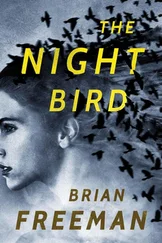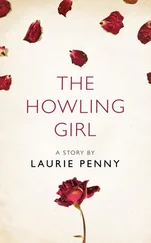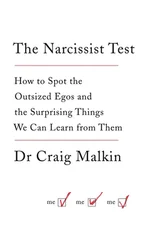“Escape stool,” he said to Irene. “This is very important.”
She nodded. She was walking through the room quietly, her hands touching lightly on the gurneys as she passed each one. There was a clipboard with a few papers clipped to it hanging off the front of each gurney, but none were occupied. Irene examined the clipboards. She did not lift the cloths that were left on top. There were no toe tags lying around, discarded. Maybe the morgue had upgraded to wristbands, or forehead tattoos, or earrings. Left is right, right is dead. George examined a list on the wall, and Irene read over his shoulder.
Things to check for before using the retort:
1. Pacemaker
2. Liquor bottles placed in the coffin by friends of the deceased
Either can cause an EXPLOSION. Please mind the clients are properly prepared for the retort.
“This must be the retort,” she said.
George looked at her, hoping to make a joke. About the word “retort.” And how, in death, there is no retort, or something. However, behind Irene, he saw a dark shape move between a filing cabinet and one of the desks. It was not blurry, but flat and black, in the shape of a human, but possibly made of coal. The worst problem about it was that it had no face. He knew, without knowing quite how he knew, that this thing was disease and death. It was the god of death: Hades, or Satan, or Ereshkigal, or whatever you wanted to say: this was the modern American version of that. The stripped-down version. No horns, no blue skin, no pagoda on its head. No romance. No fire. The thing walked on tiptoe. He couldn’t tell where it was looking. He closed his eyes and opened them again. Irene was looking at a row of machines that looked like front-loading washers. On top of them, in a metal tray, were a number of shining metal balls. George had to watch as this crusty, blank Osiris put its elbows on a gurney and jutted its chin toward Irene. Its face elongated, and it brayed. George jumped, bumping into a tray of instruments and sending a pair of forceps clattering to the ground.
“What’s wrong with you,” Irene barked.
She had found the ovens. Each had a metal clasp and was the height of one of the gurneys. There were three in all. Irene moved from one to the next, touching her hand to each one as if checking the temperature. The dry black thing came behind her, touching each one, too, mimicking her movements. George frowned. “Stop that,” he said.
“I want to know which one she was in,” said Irene.
“There’s no way to know that,” said George. “It was cool, or they wouldn’t have taken her out.”
Irene opened one of the doors. It opened with a hiss, and they saw inside the oven. It was very clean, a brick tube with a trench in the far end to collect the ashes. There were no bits of tooth and bone, no piles of dust in the corner. It all looked very sanitary. She shut the door again. Outside the door, there was a small peephole. She looked through it.
“Of course,” she said. “They wouldn’t want to mix up the people.”
Her voice sounded strangled. He thought he should get her out of there, but she was moving again, around the wall. She had found a wire shelving unit that had small black boxes lined up on it in rows.
“Here,” said Irene. “See here?”
George went to stand next to her and face the boxes on the shelves, shuddering to be so close to the death thing that kept walking around after her, but wanting to keep it away. He saw it go so close to her, but he didn’t know what to do.
“Haven’t you ever sat on a garden hose and said, hey, this is what it’s like to get fucked by Poseidon?” it hissed into Irene’s ear. George heard it clearly, but Irene seemed not to notice.
George put his arm around her. The dead thing put its arm around her on the other side. George couldn’t feel where their arms brushed together but he could feel Irene being pulled away, being pulled toward that black dryness. “She’s got to be here,” said Irene. “Look at the names. The dates.”
Each black box had a plain white rectangle on the end and the name of a person printed there. Irene ran her finger down over the names.
“Haven’t you ever sat on a vacuum cleaner and said, hey, this is what it’s like to get eaten out by Aeolus?” it hissed again.
“We have to go,” said George.
“I know,” said Irene. “I know.”
George pulled her sharply toward him. She looked up at him and smiled, so bravely, so sweetly, and behind her head he could see the black shape of the dead thing’s head, trying to tilt at the same angle.
“I’m sorry,” said Irene. “We’ll go. Here she is.”
Irene reached out both hands, hesitated, and then pulled one of the boxes off the shelf. “Heavy,” she said. “I didn’t expect that.”
The death thing was climbing on the shelf now, rattling it, shaking it like an agitated monkey.
“Popped her cherry, did you George?” it said. There was no mouth to move, no ears to hear an answer.
“Come on,” said George. “Climb through the window. I’ll hand the box out to you.”
“You can’t drop it, though.” She laughed nervously. “That would be too horrific.”
“Naturally,” said George, trying very hard to pretend to be amused. “I’m allergic to dusty clouds of dead mothers-in-law.”
“She’s not your mother-in-law,” said Irene quietly. She climbed up on the stool and heaved herself out, sat on the ledge, and then swung her legs out, dropped away.
Now George was alone with the thing and its black breath. The thing is this: there had never been anything all that bad in his life. No one had died. No one had even been very sick. His mother had laid waste to every problem in his path. She spread out the world, easy for his taking, tuned to his key, ripe for his harvest. No grandmother to wither, no teacher at school, no college chum, no one would have come to end up here or anywhere else where death could find them. His mother had kept that all from happening, from the sheer force of her human will. And now George stood, one foot on the stool, one hand on the window ledge, the black box of ashes tucked under his arm, and the bad ugly god said one more thing to him.
“I’m coming for you,” it said. “Believe it.”
Irene had no memory of the time before the fire. No memory of the fire itself. Irene’s first memory of her mother was an incorrect outline of the mother’s face against the white ceiling in the dark. It was bedtime and Irene was getting rocked to sleep. As she lay in her mother’s arms, she would look up at her mother’s face now and again and then close her eyes. She could remember looking up once, and instead of seeing the flatness of a face with a small nose poking out and glasses shining in the light from the hallway, she saw a sharp point jutting out of the forehead and a smooth recess where the face should be. She lay there for a minute, staring. In her memory, she couldn’t place what she thought about it. But she remembered relief at realizing the sharp point was a chin, the smooth recess a neck. Her mother’s head had fallen back against the chair because she was asleep, and Irene was seeing the bottom side of it. Then she felt like laughing. On subsequent nights, when she observed this shape against the ceiling, she was not disturbed. Because she knew it was just a chin. Mommy, she would say, Wake up, please. And feel a quiet smugness that her mother was looking undignified in the rocker.
She was always two years younger than her classmates. And always seemed to be a foot smaller. For this she was tortured on the elementary school playground, and later came the impossibility of dating in high school. None of the showio-boobio that was going on in other girls’ lives. Irene could remember a little boy in her third grade class who chased her around the sandbox in the playground, trying to sit next to her and touch her legs. That was the last time she was pursued sexually until she was in graduate school.
Читать дальше












